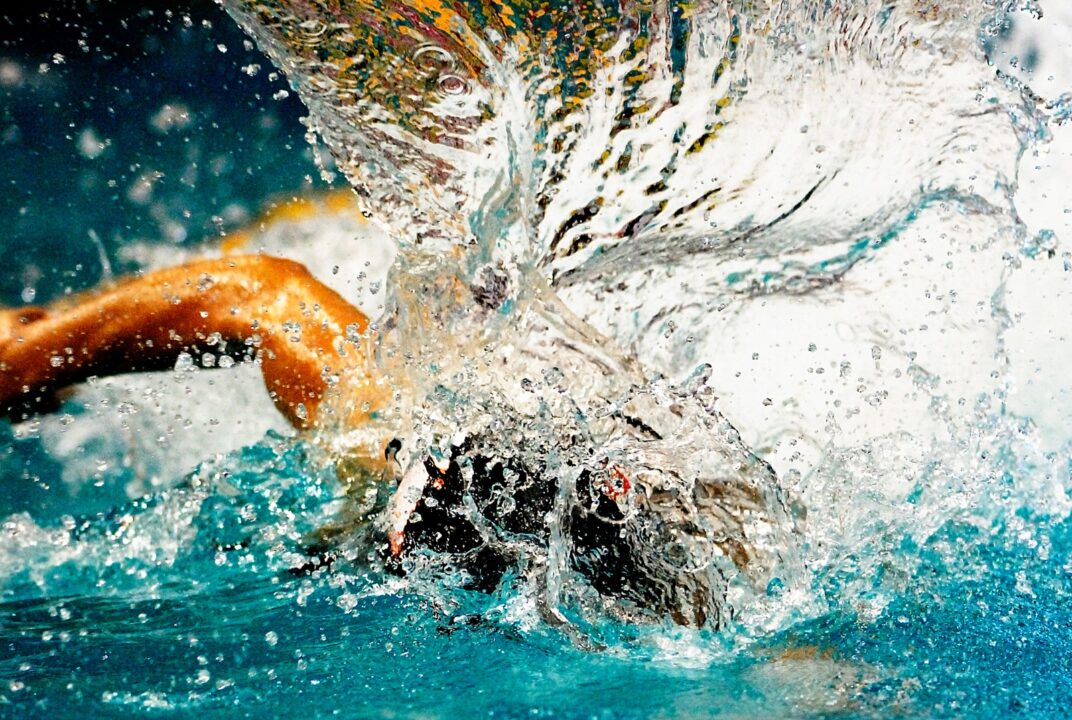The following comes to us from swimmer and coach Josh Hurley, who put together a research paper on dryland training and its specific application to swimming. We’re splitting the bulk of the paper into a series, but you can see the full paper (including abbreviations, a comprehensive glossary, and a bibliography) here.
- Part II (coming soon)
- Part III (coming soon)
- Part IV (coming soon)
- Part V (coming soon)
INTRODUCTION
Identifying the most important aspects of dry land training to supplement the training competitive swimmers complete in order to maximise performance; reducing times by increasing stroke efficiency and athleticism.
Academic research into how to best use dry land training appears to be limited. Most of the reliable sources have information for sport specific practices, the majority being on athletics and gymnastics. Information for other sports can be used and applied to swimmers but the specific needs of a swimmer must be tailored to. Swimming is especially difficult to apply this information as there are so many events and different strokes to cater for; four strokes and 6 major events for each stroke at world championship level, as well as the individual medley events at various distances.
The purpose of this report is to identify the key aspects of training and how best dry land training can supplement all strokes and areas of a competitive swim; including starts and turns. A portfolio of information from academic research will firstly be considered and after analysis and interpretation of the information a conclusion will be drawn as to how best to maximise performance.
Firstly, the biomechanics of swimming and the muscle composition of competitive swimmers will be investigated. This will set a clear outline as to the goals dry land training is trying to achieve on a muscle by muscle basis. The report will offer ideas around prehabilitation; increasing the possible volume of training and maximising recovery for the athlete. This includes reversal of some major postural problems swimmers face – although not directly affecting their performance, it can prolong athletes careers offering more time for competitive success. This will help coaches develop a plan that can be as effective as possible by lowering risk of injury. Next a series of different training types will be compiled in order to demonstrate the possible ways of training swimmers. Finally analysis and interpretation of research will help to draw a conclusion and advise coaches how best to form a comprehensive plan for swimmers, detailing key considerations for different events and distances.
TRAINING CONSIDERATIONS
KEY ASPECTS OF DRY LAND TRAINING
There are many reasons for land training competitive swimmers. The dry land environment gives an opportunity for the athletes to train with less resistance (in air rather than water) for muscle and joint recovery and mobility; and also gives the chance to progressively overload building strength and offering the chance to develop explosively.
The program must offer some of the following attributes:
‘weaknesses within a system should be highlighted and improved’; ‘overload is essential’; ‘exposure to complex interactions such as multi-joint movement patterns’ (Crowley et al. 2017); allows different movement patterns; increases joint and muscle health; increase explosive potential.
WARMING UP (INCLUSIVE)
Dry land training is used before every training session to mobilise and prepare joints and muscles for the resistance experienced in water. ‘The combination of dry-land-based activation exercises followed by pool-based warm up routines seems to be the preferred approach taken by elite swimming coaching’ (McGowan et al. 2014) to do this the warm up should include more basic dynamic stretching motions allowing joints to move through the full range of motion. Towards the end of the dry land warm up; resistance exercises can be included and a pulse raiser may be added although this may not be necessary as there will be a pool warm up to follow.
‘aims for prescribing dry-land warm ups’ include ‘(a) preparation, (b) metabolic adaptations, (c) improving range of motion, and (d) injury prevention.’ (Crowley et al. 2018). There is also an aspect of psychological preparation when warming up. It is important that athletes get mentally prepared to train, to focus on form and help prevent injuries.
EXCLUSIVE DRY LAND TRAINING
Dry land training can also be performed independently; allowing the swimmers to develop more athletically and to remove any imbalances formed during pool training.
‘(a) performance, (b) robust swimmers, and (c) injury prevention’ (Crowley et al. 2018).
Up Next: dryland needs broken down to all four strokes, plus starts and turns.
About Josh Hurley
Josh Hurley is a qualified and practicing Swimming Teacher as well as a Fellow of the Institute of Swimming in England, he is currently training to become a swimming coach following his experiences as Club Captain of a British swimming club. Josh is also studying dentistry at King’s College London and uses his understanding of human biology to research innovative methods of coaching future generations of swimmers.


Given that Josh writes the purpose of his paper is to identify how best dry land training can supplement all strokes, his target audience must be strength coaches. So that leaves me out.
During my first pass of his paper, however, I came across two point he made that caught my attention.
The first is how the rectus abdominis creates the majority of the undulating movement in the butterfly stroke. What about their complementary muscles?
The second is training to failure. I am a big fan of training to failure sets in the pool. If you make it to the end of one of these sets without your times increasing, then you haven’t worked hard enough throughout the set and… Read more »
Very helpful paper. And the references in said paper are also a goldmine.
Especially the exercise table at the end of the paper, although I did not see any prehabilitation exercises.